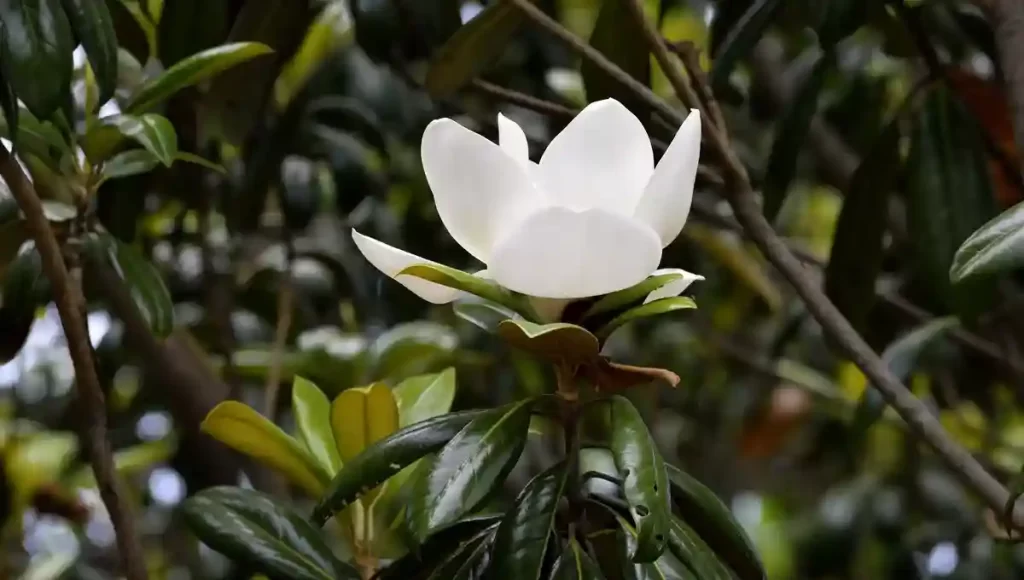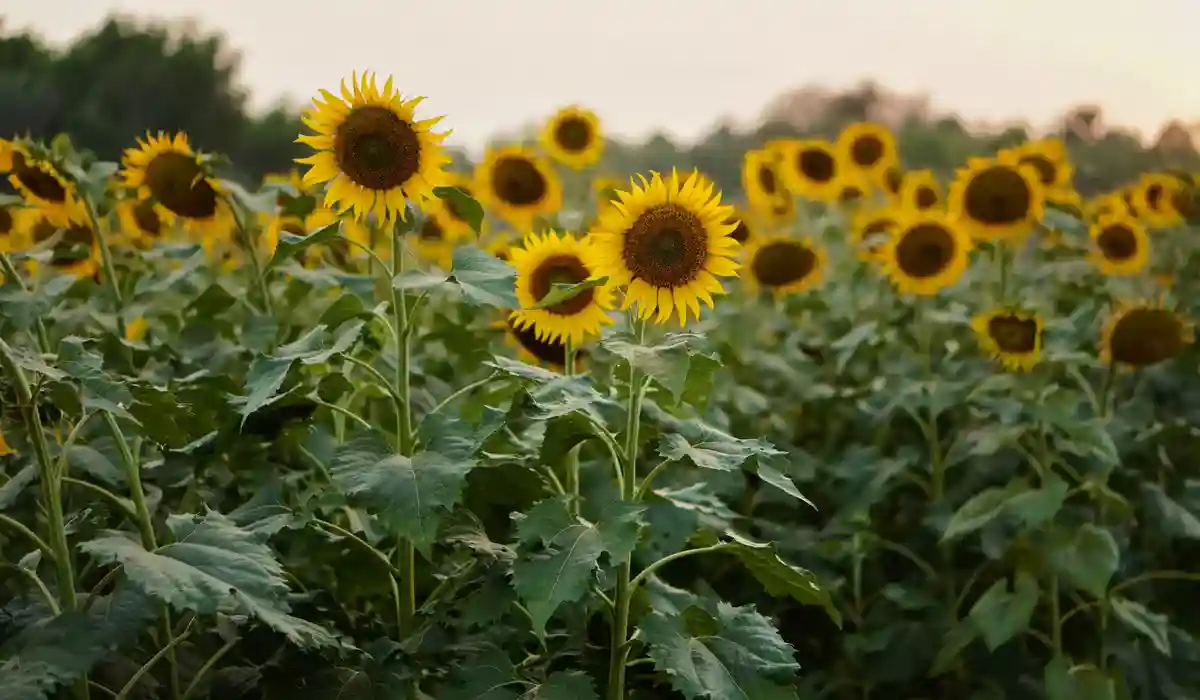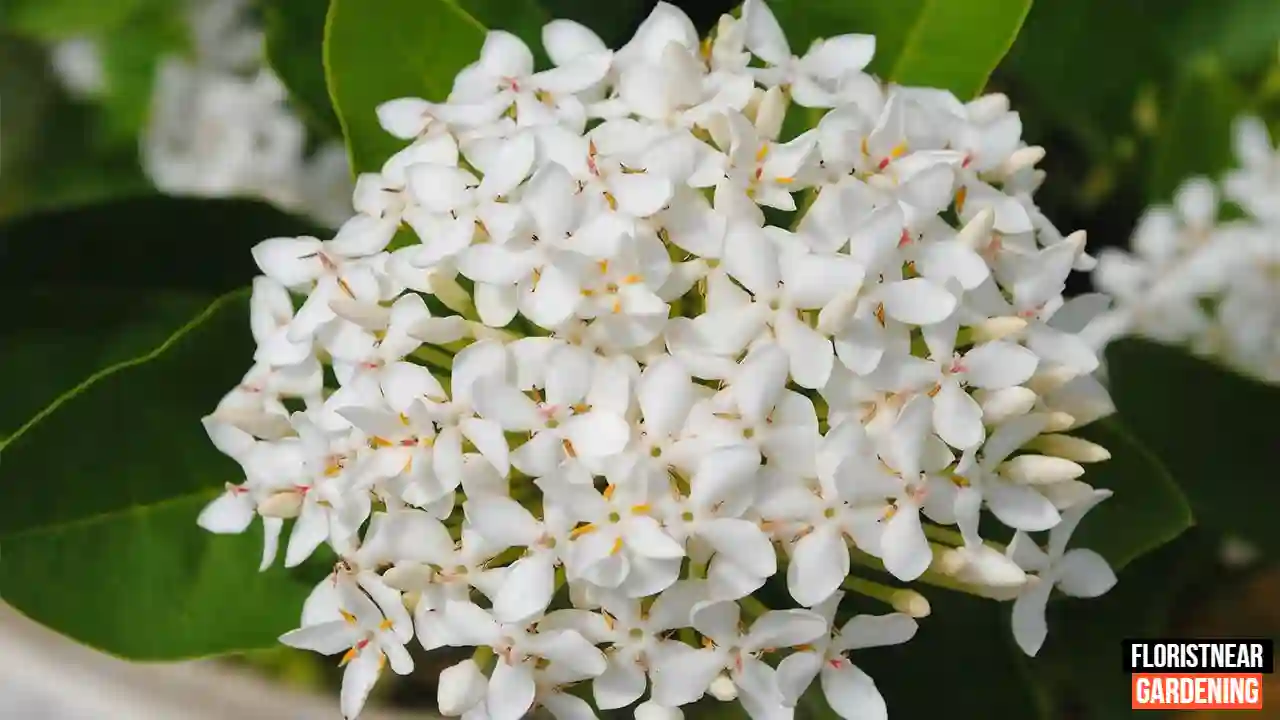If you’re looking for a summer plant that has both beauty and fragrance, ‘Magnolia grandiflora Tree’ is perfect. It is also known as Southern Magnolia. Magnolia grandiflora plant care is very easy, the magnolia tree is popular for its fragrant flowers and glossy green leaves, making it a popular choice for landscaping.
Magnolia grandiflora, the scientific name of the plant. It is a flowering, woody, evergreen, perennial plant, belonging to the Magnoliaceae family. In Bengali it is called Udaypadma or Himchampa. English Names- Southern Magnolia, Bull Bay, Big Laure, etc.
Magnolia Grandiflora Plant Care: Tips and Tricks for Healthy Growth
Magnolia grandiflora tree is a beautiful and fragrant plant that can be a stunning addition to any landscape. This plant is native to the southeastern United States, that grow up to 80 feet tall and 8–12 inches in diameter, with white flowers. The plant’s leaves are glossy, dark green and can be up to 10 inches long. In this guide, we’ll cover everything you need to know to successfully grow and care for your own magnolia grandiflora.

There is another species of Southern Magnolia known as Little Gem Magnolia or little gem southern magnolia. Little gem magnolia plant care is similar to magnolia grandiflora, but it can tolerate some shade. Little Gem Magnolia Tree Adapts to any location Magnolia grandiflora. They can tolerate clay, sandy soil and loamy soil as long as it is well drained.
Magnolia Grandiflora Soil Type:
Magnolia grandiflora plants prefer fertile, well-drained soil that is slightly acidic (with a pH between 5.0 and 6.5). If the soil is too alkaline, you can add sulfur to lower the pH. Additionally, this plant likes soil rich in organic matter, so mix compost or organic matter into the soil before planting. Plants should be watered, especially during the first few years after planting.
Be careful not to overwater the plant, as this can cause root rot. The plant also benefits from mulching, which can help retain moisture and regulate soil temperature.
Light Requirements:
Magnolia grandiflora prefers partial shade but needs 4 to 6 hours of full sun a day. It grows in warm climates and can tolerate some cold, but is not suitable for regions with harsh winters.
Water Application:-
Magnolia grandiflora likes moist soil but not wet soil. Make sure the soil is constantly moist but not waterlogged. A layer of mulch should be built around the base of the plant to help retain moisture and keep the roots cool.
Fertilizer Application: –
Magnolia grandiflora benefits from regular fertilization, especially during the spring and summer months when it is actively growing. Use fertilizers containing equal amounts of nitrogen, phosphorus and potassium. Avoid fertilizers that are high in nitrogen, as this can cause plants to have more leaves than flowers.
Pruning: –
Pruning is essential to maintain proper shape and size of magnolia grandiflora plants. Pruning should be done before new growth occurs in late winter or early spring. Dead or damaged branches should be removed, as well as any branches that cross or rub against each other. When pruning trees, be sure to use sharp, clean tools to prevent the spread of disease.
Pests and Diseases:-
Magnolia grandiflora trees are generally pest and disease resistant. It can be susceptible to scale insects, neem oil mixed well with water should be sprayed in the evening every 7 to 10 days. If there is a larger infestation of insect spiders, it should be suppressed by chemical means. The plant can also be affected by leaf spots, which can be prevented by avoiding overwatering and removing infected leaves.
Propagation: –
If you are interested in propagating your Magnolia grandiflora plant, there are several methods.
- From the cutting:
The easiest method is to propagate plants from mature cuttings in early summer or autumn. These mature branches will shed all the leaves on the branch which is about 6–8 inches long. Applying the best root hormone to the lower part of the branch before planting will help to develop fast roots. But while making seedlings from cuttings, the cuttings must be kept in a shaded place.

Winter Care:
The Magnolia grandiflora plant is hardy in USDA zones 7–9 and can tolerate temperatures as low as 0 degrees Fahrenheit. However, in colder climates, it may require some winter protection, such as wrapping the trunk with burlap or covering the tree with frost cloth.
In conclusion, Magnolia grandiflora plants are relatively easy to grow and care for as long as you provide them with the right soil, moisture, fertilizer and occasional pruning. With its beautiful flowers and fragrant scent, this plant can be a showstopper in your landscape.
[READ MORE: TOP 30 SUMMER FLOWERS TO GROW IN YOUR GARDEN]
Magnolia Grandiflora Types:
Magnolia grandiflora, commonly known as Southern Magnolia or Bull Bay, is an evergreen and woody plant typically native to the southeastern United States. There are several recognized cultivars of Magnolia grandiflora, each with its own distinct characteristics, as outlined below.



